The foreground layer takes landscape photography to the next level. When out in nature, it’s easy to devote your attention to distant snowy peaks, red canyons or gently rolling hills. But just because the lighting is perfect and your focus is spot on doesn’t mean the photo can’t be improved.
Be sure to look at what’s close to you. It’s often the foreground in your photo’s composition — the part closest to you — that gives the viewer proper perspective and added dimension.
Adding depth
Most landscape photos are shot with a wide-angle lens to capture the magnitude of the scene. In essence, this compresses distance. The effect on the viewer is that they see a scene where everything is far away and very two-dimensional.
A foreground element, by its very nature, will draw the eye. But more than that, it will work to add depth to the overall scene. It adds that third dimension to a 2D photo. It deepens the scene by giving a sense of distance. The viewer is now drawn in because they have been granted spatial awareness.
In the example below, the castle wall in the foreground provides depth to the photo. The viewer can properly perceive the amount of drop-off from the cliff to the valley below, and perhaps even feel like they are standing at the wall.
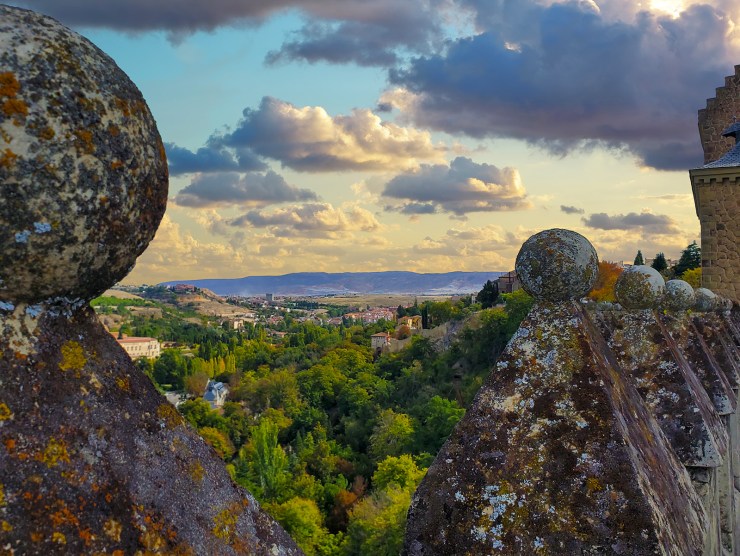
Adding scale
Plants, people or animals in the foreground provide a measurement of scale in the photo. This helps accentuate the magnitude of the background layer.
Have you ever taken a photo of a scenic vista and told people that the photo doesn’t do it justice? “That cliff was much bigger in real life.” “You wouldn’t believe the size of that waterfall!” After all, scale is what makes the Grand Canyon grand. Adding foreground elements to nature photography captivates viewers with a sense of grandeur.
To see this in practice, notice the difference in the below photos just by capturing the trees in front of the river. Even though these foreground trees are further than usual from the viewer, the scene composition is improved while the true towering size of Logan Pass is better understood.
.mgl-tiles { display: none; } #mgl-gallery-63d3d7ca8c313 { margin: -2.5px; width: calc(100% + 5px); } #mgl-gallery-63d3d7ca8c313 .mgl-box { padding: 2.5px; } @media screen and (max-width: 768px) { #mgl-gallery-63d3d7ca8c313 { margin: -2.5px; width: calc(100% + 5px); } #mgl-gallery-63d3d7ca8c313 .mgl-box { padding: 2.5px; } } @media screen and (max-width: 460px) { #mgl-gallery-63d3d7ca8c313 { margin: -2.5px; width: calc(100% + 5px); } #mgl-gallery-63d3d7ca8c313 .mgl-box { padding: 2.5px; } }
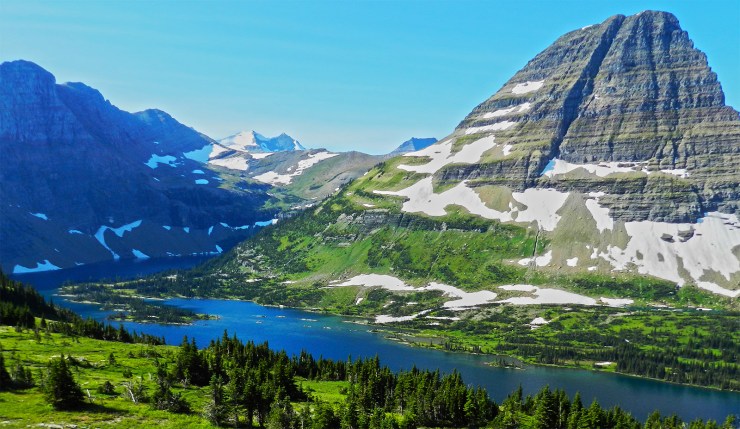
Logan Pass, Glacier National Park
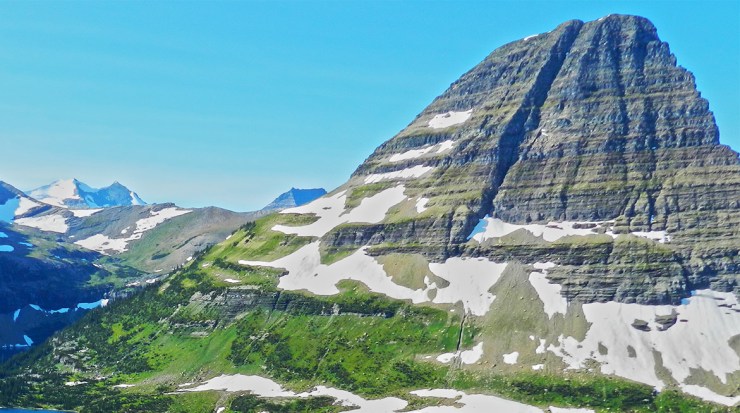
The trees before the river make a difference.
Adding interest
A proper foreground layer anchors the image, enhances the composition, affects mood and can deliver impact. It gives the eye a starting point to work into other layers of the image. Foreground elements are also a good opportunity to use sight lines to guide the viewer’s eye to something in the middle ground or background.
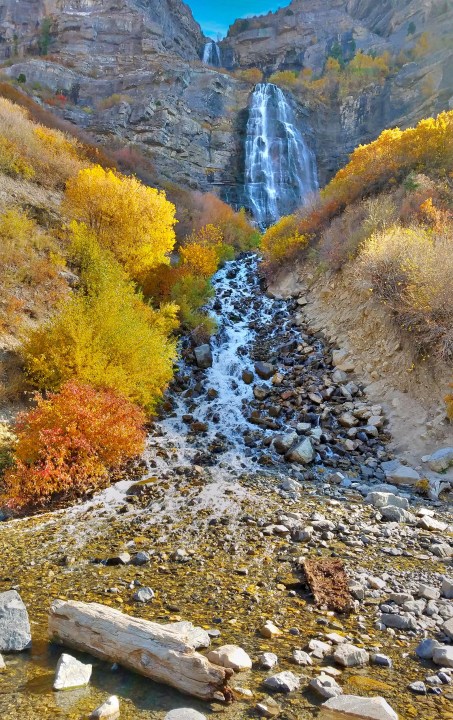
Storytelling
If a picture is worth a thousand words, a picture with good foreground is worth two thousand! Photos are often used to tell a story and foreground helps the viewer interpret the message.
Consider the scenario below.
I was in a boat touring Surprise Glacier in Alaska. The scene was particularly beautiful to me, so I took a photo. All of a sudden, a huge chunk of the glacier falls into the water (which is called calving). The sound was thunderous and the sight was spectacular! But I was most amazed at how quickly everything went back to normal like it was no big deal. Although the inlet was now littered with chunks of ice, the water returned to stillness and the wildlife went on with their relaxation.
I snapped this photo among the crowd on the boat and find it perfect for telling my story about the aftermath of the glacier calving.
.mgl-tiles { display: none; } #mgl-gallery-63d3d7ca8cf0f { margin: -2.5px; width: calc(100% + 5px); } #mgl-gallery-63d3d7ca8cf0f .mgl-box { padding: 2.5px; } @media screen and (max-width: 768px) { #mgl-gallery-63d3d7ca8cf0f { margin: -2.5px; width: calc(100% + 5px); } #mgl-gallery-63d3d7ca8cf0f .mgl-box { padding: 2.5px; } } @media screen and (max-width: 460px) { #mgl-gallery-63d3d7ca8cf0f { margin: -2.5px; width: calc(100% + 5px); } #mgl-gallery-63d3d7ca8cf0f .mgl-box { padding: 2.5px; } }
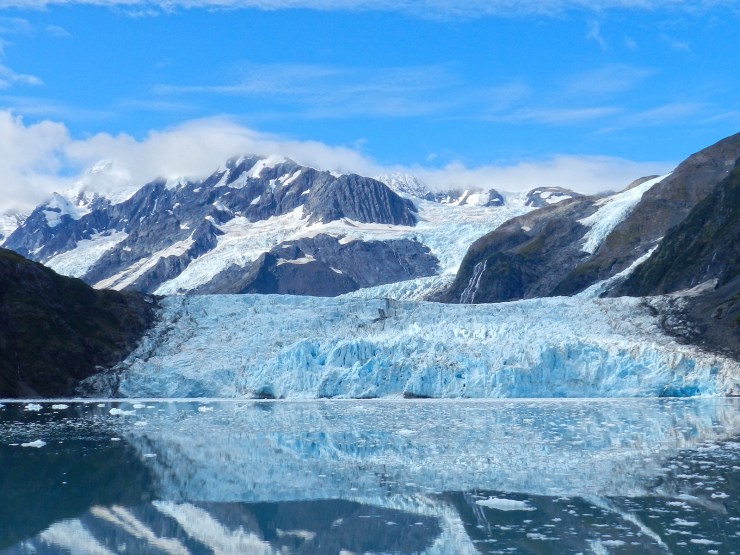
Surprise Glacier, Alaska
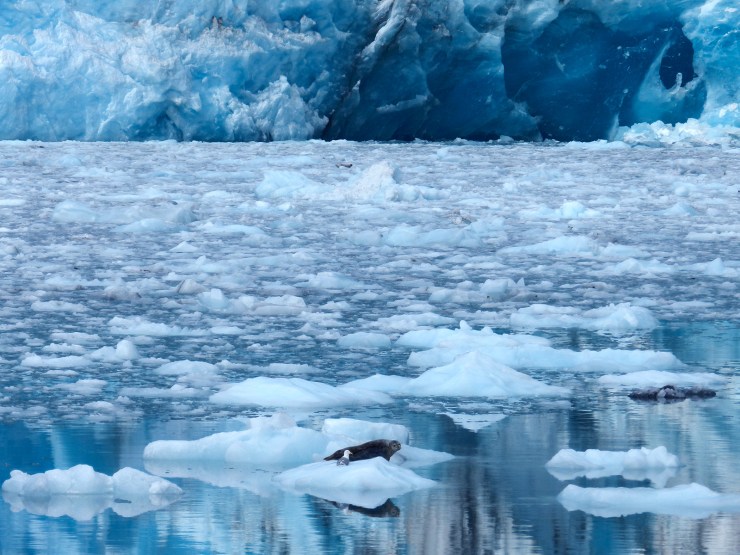
Glacier calving causes instant foreground
It has all the hallmarks of foreground. The nonchalant seal adds interest and draws your eye. There are plenty of scaling metrics going on because we know the size of the seagull, therefore we know the size of the seal, meaning we know the size of the ice chunks.
And the perspective back to the glacier adds depth. The ice chunk sightline brings your eye to the torn glacier remains.
Finding foreground
If you can’t find a foreground immediately at your location, you’re probably overthinking it. After all, finding the amazing background setting during perfect weather at the perfect time was the hard part. Just spend a moment exploring the nearby area.
If you’re still having trouble, remember that you don’t always need something super dramatic, like a reflection on a lake. Try a different angle. Shooting from a low perspective to capture a plant, colorful leaves, smooth pebbles or downed branches in the foreground is often enough to add interest, scale and depth to your photo. It can literally be as simple as stepping back from a railing.
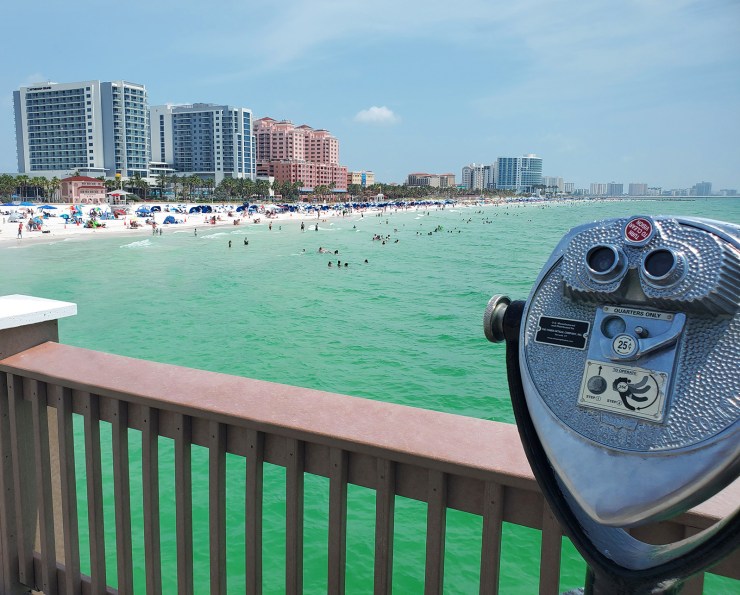
Also, remember that not all landscape photos require traditional shooting methods. Swap out your wide-angle lens to obtain different focal lengths and take a picture that adds more weight to the foreground layer for visual interest. Most landscape images try for uniform focus throughout, but it’s not a mandatory rule.
All the layers in the composition of a photo are important, so don’t forget about the foreground layer. It can be the element that turns a good photo into a great photo. When you can make a viewer actually feel that they’re in the place where you took the photo or interested in the scene, that’s a great accomplishment!
Tell your story with the second annual Visual Storytelling Conference!
Experience four days of interactive, online training sessions featuring a range of educational content with experienced photographers and content creators. This free event kicks off with a series of technical boot camps to build essential skills, followed by live, online sessions on photography, video, business and social media. Join live from March 10-13, 2022!
